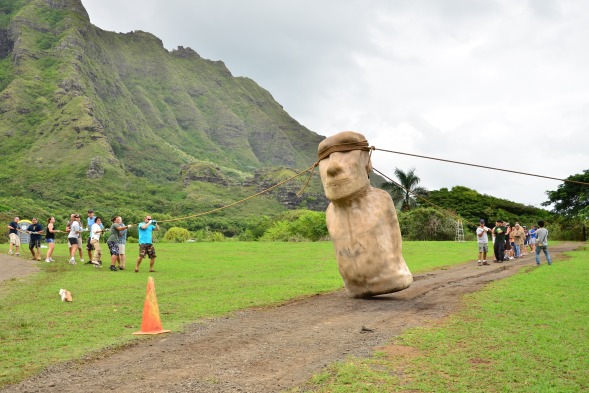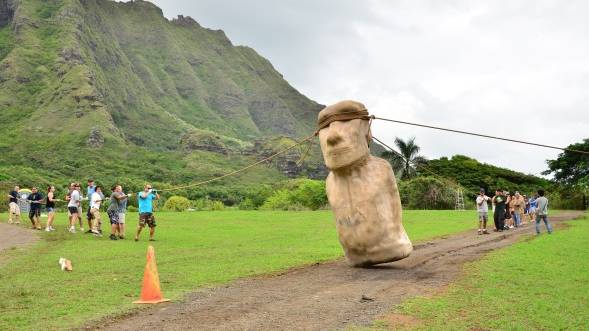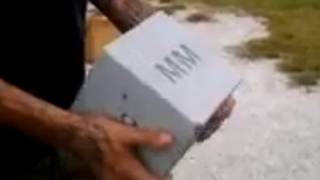Easter Island’s ’Walking’ Stone Heads Stir Debate
Source: livescience.com

An idea suggesting massive stone statues that encircle Easter Island may have been "walked" into place has run into controversy.
In October 2012, researchers came up with the "walking" theory by creating a 5-ton replica of one of the statues (or "moai"), and actually moving it in an upright position, and have published a more thorough justification in the June issue of the Journal of Archaeological Science. If the statues were walked into place, then the islanders didn’t need to cut down the island’s palm trees to make way for moving the massive carvings, the researchers argue.
The findings may help dismantle the traditional storyline of Easter Island, or Rapa Nui: that a "crazed maniacal group destroyed their environment," by cutting down trees to transport gigantic statues, said study co-author Carl Lipo, an anthropologist at California State University, Long Beach.
But not everyone in the field is convinced. While some experts find the demonstration persuasive, others think it’s unlikely the large statues could have been walked upright on the island’s hilly, rough terrain.
Ancient enigma
Rapa Nui’s majestic rock statues (also known as Stone Heads of Easter Island) have been a mystery since Europeans first arrived in the 1700s on the island, located in the Pacific Ocean off the west coast of Chile. Though the island was filled with a giant palm forest when Polynesians first arrived in the 13th century, the first European explorers found massive megaliths on a deforested, rock-strewn island with just 3,000 people.
In the past, archaeologists proposed that a lost civilization chopped down all the trees to make paths to roll the megalithic structures horizontally for miles on top of palm trees used as "rolling logs" of sorts, from the quarries where they were created to ceremonial platforms. That transport method would have required many people, and led to deforestation and environmental ruin that would’ve caused the population to plummet.
Walking statues
But Lipo and his colleagues wondered whether that made sense. For one, other archaeological evidence in villages suggested the island’s population was never that large, and the palm trees, essentially hardwood with a soft, foamy material inside, would be crushed by the rolling statues, Lipo said.
Along the road to the platforms are moai whose bases curved so they couldn’t stand upright, but instead would topple forward, meaning the ones in transit would have to be modified once they reached the platform. That made the researchers wonder why the statues weren’t made to stand upright in the first place if they were meant to be rolled into place, not walked, Lipo said
And the statues found on the roads to the platforms all had wider bases than shoulders, which physical models suggested would help them rock forward in an upright position.
[...]
Read the full article at: livescience.com
READ: How Easter Island’s statues walked






















